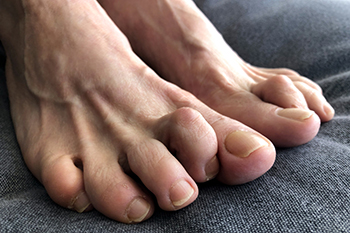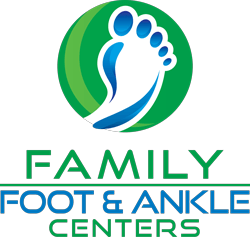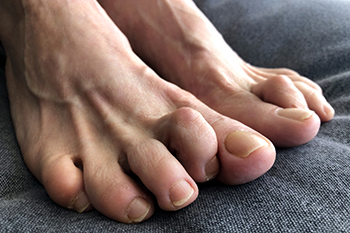What Type of Shoes to Avoid With Hammertoe

A deformity affecting the second, third, or fourth toe can be referred to as hammertoe. This condition causes one or more of these toes to bend downward at the middle joint. Hammertoe can develop from wearing shoes that do not have adequate room for the toes to move freely, which often includes high heels. In some cases, the affected toes can be manipulated into their normal position as long as they are somewhat flexible. Surgery may be a necessary treatment option for less flexible joints and this often results in permanent straightening. Many patients have to purchase shoes that can accommodate their deformed toes. Corns and calluses can form on top of the joints as the toes rub against the top of the shoe. Some patients also experience pain from calluses that form on the sole of the foot. This can happen due to the chronic stress placed on the foot from the deformed toe. Hammertoe is a foot condition that is treated by a podiatrist and it is strongly suggested that you consult with this type of doctor if you are affected by this ailment.
Hammertoe
Hammertoes can be a painful condition to live with. For more information, contact one of our podiatrists from Family Foot & Ankle Centers. Our doctors will answer any of your foot- and ankle-related questions.
Hammertoe is a foot deformity that affects the joints of the second, third, fourth, or fifth toes of your feet. It is a painful foot condition in which these toes curl and arch up, which can often lead to pain when wearing footwear.
Symptoms
- Pain in the affected toes
- Development of corns or calluses due to friction
- Inflammation
- Redness
- Contracture of the toes
Causes
Genetics – People who are genetically predisposed to hammertoe are often more susceptible
Arthritis – Because arthritis affects the joints in your toes, further deformities stemming from arthritis can occur
Trauma – Direct trauma to the toes could potentially lead to hammertoe
Ill-fitting shoes – Undue pressure on the front of the toes from ill-fitting shoes can potentially lead to the development of hammertoe
Treatment
Orthotics – Custom made inserts can be used to help relieve pressure placed on the toes and therefore relieve some of the pain associated with it
Medications – Oral medications such as anti-inflammatories or NSAIDs could be used to treat the pain and inflammation hammertoes causes. Injections of corticosteroids are also sometimes used
Surgery – In more severe cases where the hammertoes have become more rigid, foot surgery is a potential option
If you have any questions please contact one of our offices located in Corsicana, Ennis, and Waxahachie, TX . We offer the newest diagnostic and treatment technologies for all your foot and ankle needs.
The information provided in this article is not meant to be medical advice and is for educational purposes only. If you would like to learn more about topics related to podiatry, feel free to contact Family Foot & Ankle Centers by clicking here or calling 972-597-4132 to reach our Waxahachie office, 903-872-9910 to reach our Corsicana office, or 972-875-3668 to reach our Ennis office.



